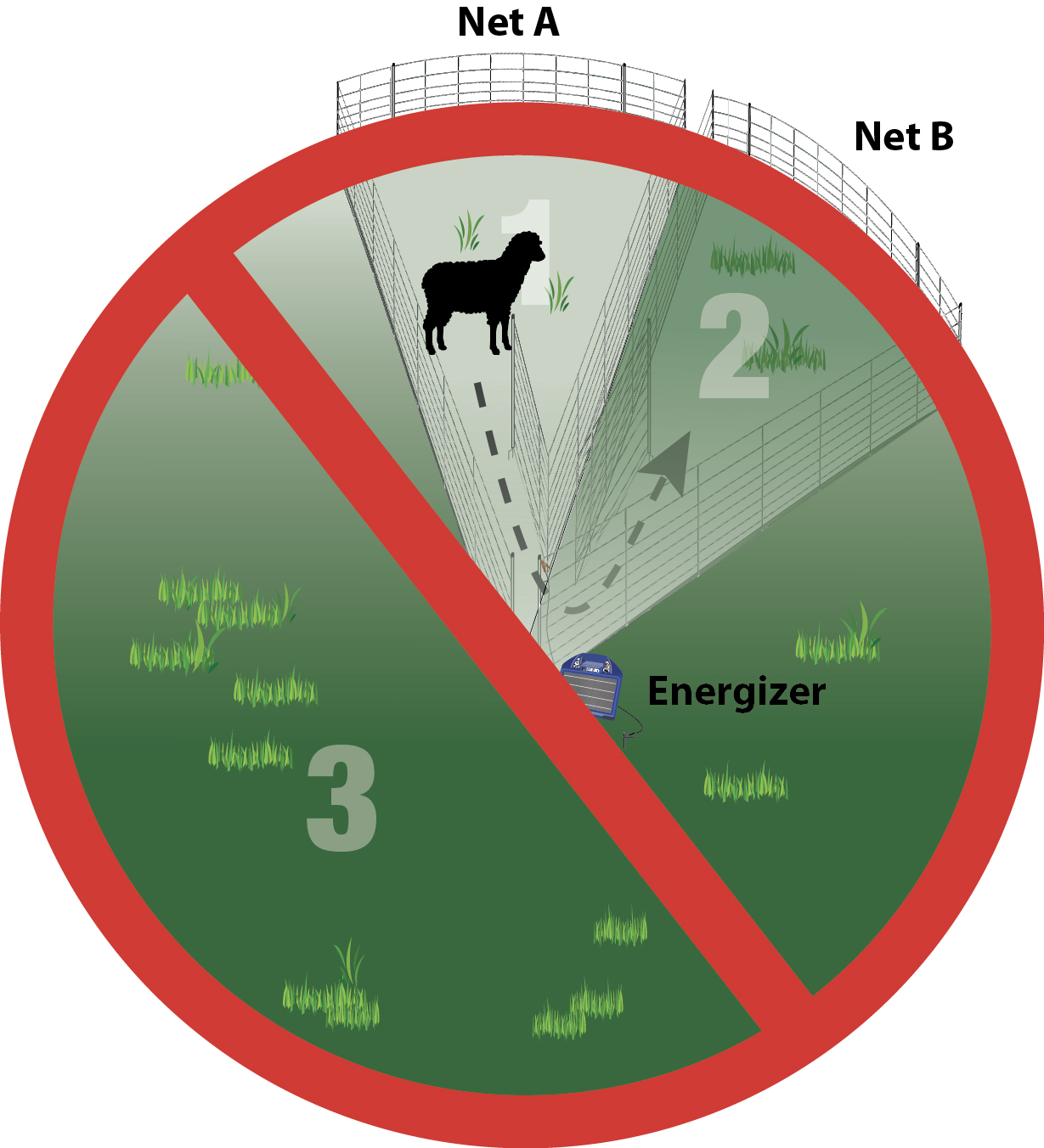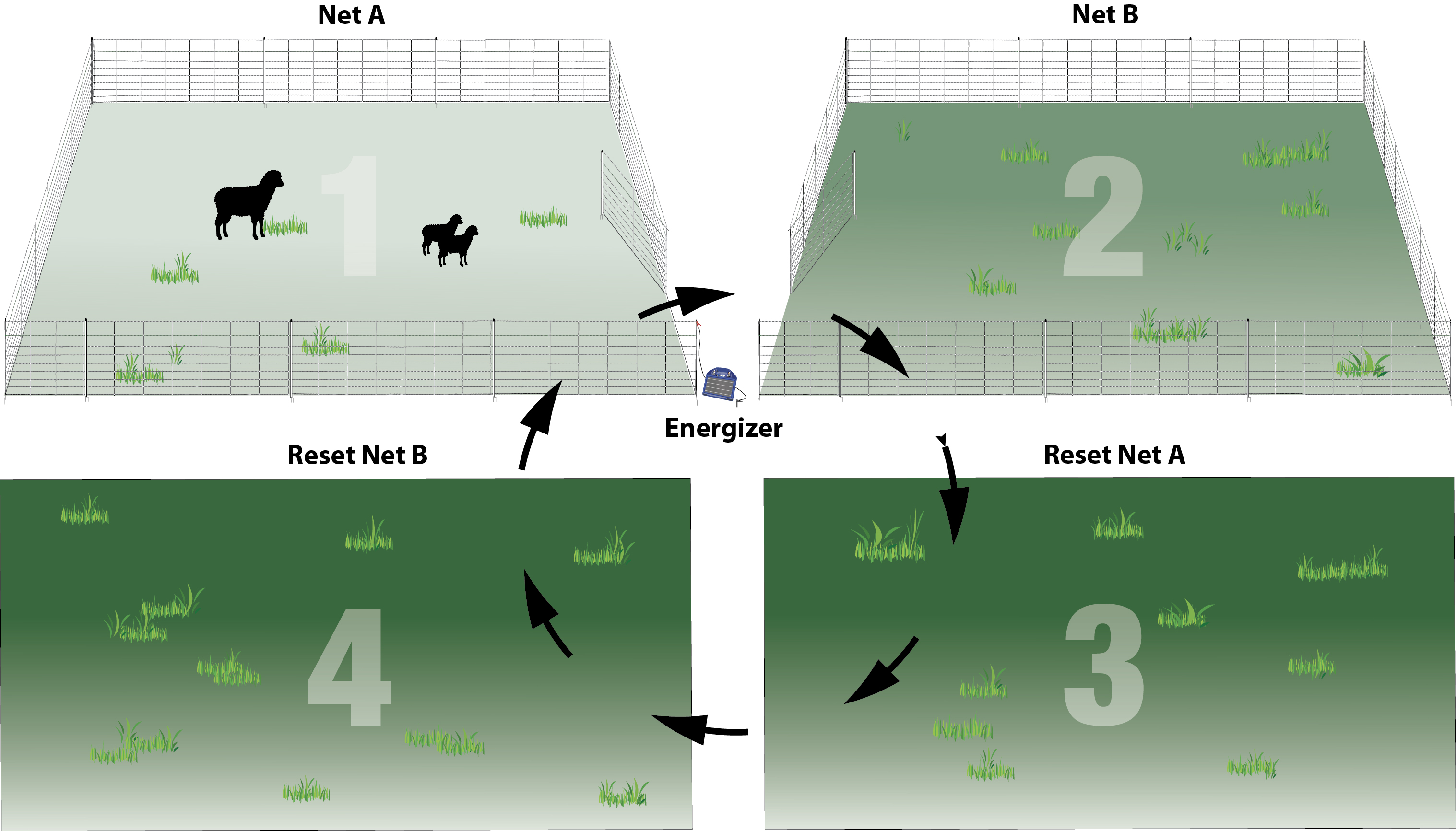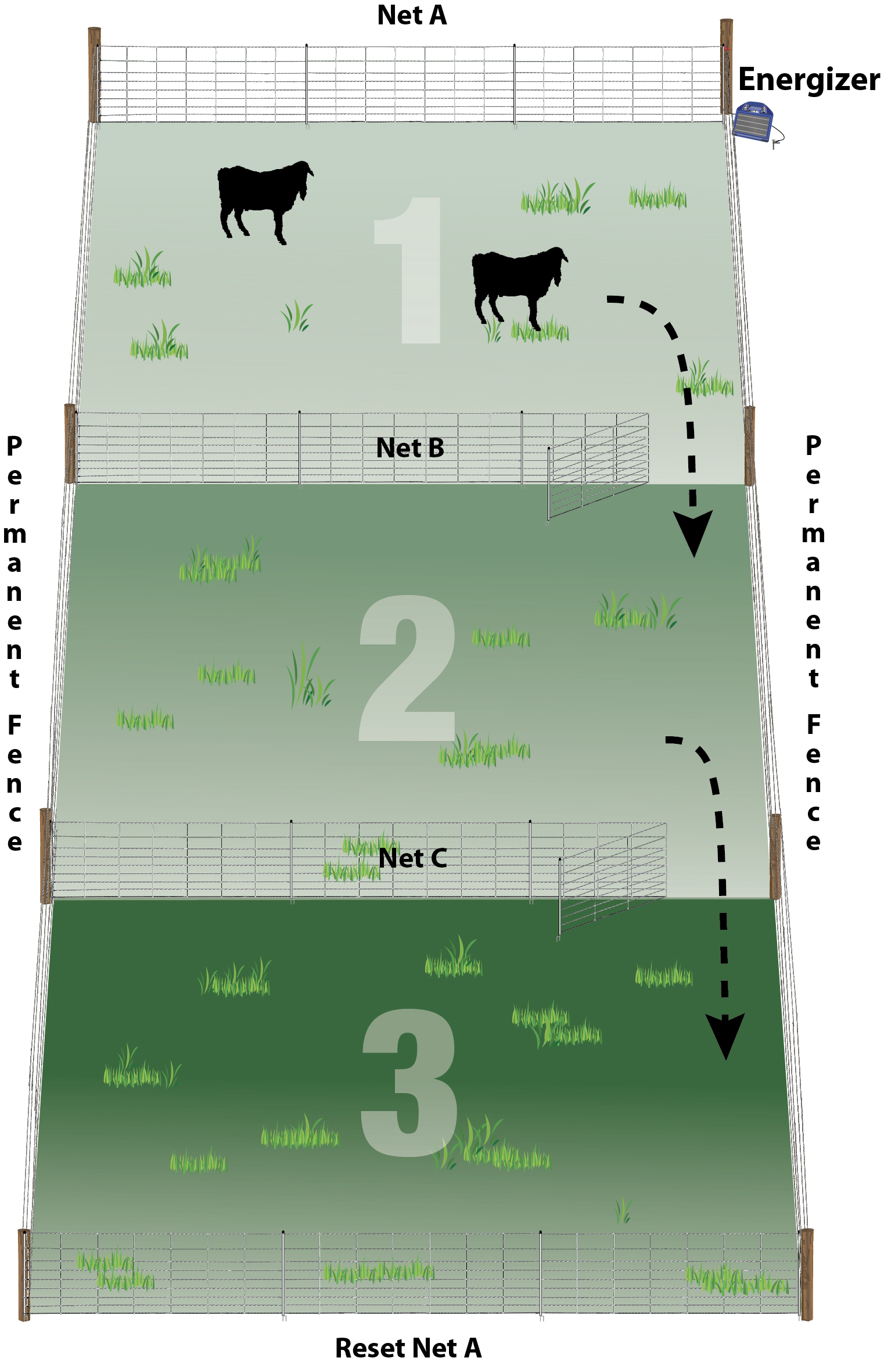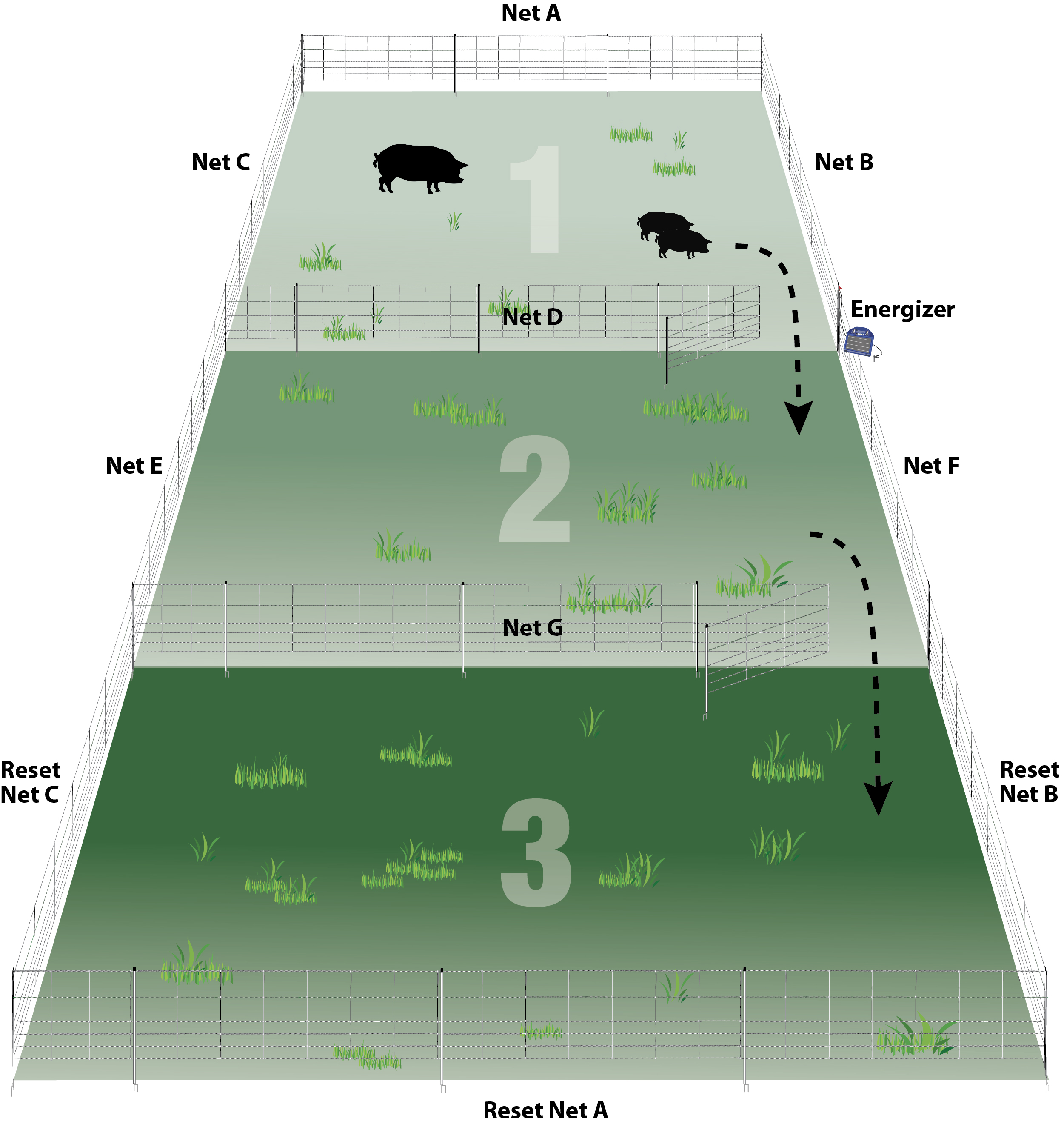
Rotational grazing can be simply explained as moving livestock between pastures (often called paddocks) every set number of days or as needed. The benefits of rotational grazing are many. But how do you get started? In this issue, we explore three practical paddock configurations.
Lydite’s electric netting is well-suited for rotational grazing—it’s quick to install, durable, and adaptable to dips and curves in difficult terrain. While the flock or herd is grazing a paddock, a temporary fence for a second paddock is installed. The animals are moved from the old paddock to the new when the forage in the first paddock is expended. The fence from the original paddock is taken down and reset, making a third paddock for grazing. This process is repeated for the entirety of the pasture.
Three different ways to rotationally graze…
A common question from those new to electric netting is, “How and where should I position the netting so it’s easy to move both the fence and the livestock it protects?” In response, we’ve organized three grazing options:
A two-net system with multiple paddocks
A three-net system with multiple paddocks
A seven-net system for larger flocks
Lydite’s electric netting can be adapted to suit these systems, providing flexibility and ease of movement for both the livestock and the fence.
A two-net system with multiple paddocks (energizer doesn’t need to be moved)
This simple two-roll setup creates four equally sized paddocks. The key is to install net B so its ends meet at the end of net A, with net A’s ends connected to the energizer (center above). Open up both nets to transfer animals. Take down the original paddock and use that net to set up the next one (and so on). The fence line would measure 40’x40’ for 1,600 square feet of grazing per paddock, or 6,400 square feet for the whole system.
A three-net system with multiple paddocks (rarely move the energizer) Install your temporary netting as a subdivision fence between semi-permanent or permanent fence. The nets in this system will leapfrog one another. Two nets will be used to form an enclosure (A and B), while a 3rd (C) is set up ahead forming the next paddock to graze. When the flock/herd is moved to new grazing, net A is taken down and moved ahead to form the next paddock.
A seven-net system for larger flocks (occasionally move the energizer)
Use four nets (A-D) to make a square. Each corner should be the juncture of two rolls of net. The remaining three nets (E-G) should be set up next to the original 4 to make another square. Once grazing is complete, move the flock/herd to the new paddock, take down the nets A-C surrounding the old paddock (minus D which makes one of the sides of the new paddock) and set up to make the new grazing location.
Wedges: Great on paper but…

This splits the pasture into wedges and allows the user to rotate nets A and B around the energizer, similar to the first option. If using a 164′ net, the fence line would measure (roughly) 60’x40’x60′ for 1,200′ square feet of grazing per wedge, or 11,300 square feet for the whole circle. This makes 9-1/2 wedges. Though this offers more square footage of grazing, livestock will not graze the area near the center because it’s too constrictive. Because of this, we do not recommend wedge grazing.









Wuxi, China
Zhihui568, Jianghai Western Road
Wuxi, Jiangsu, China
Head Factory
Area A, Shuangmiao Industrial Park, Wutong Road, Huishan District, Wuxi City, Jiangsu Province, China




